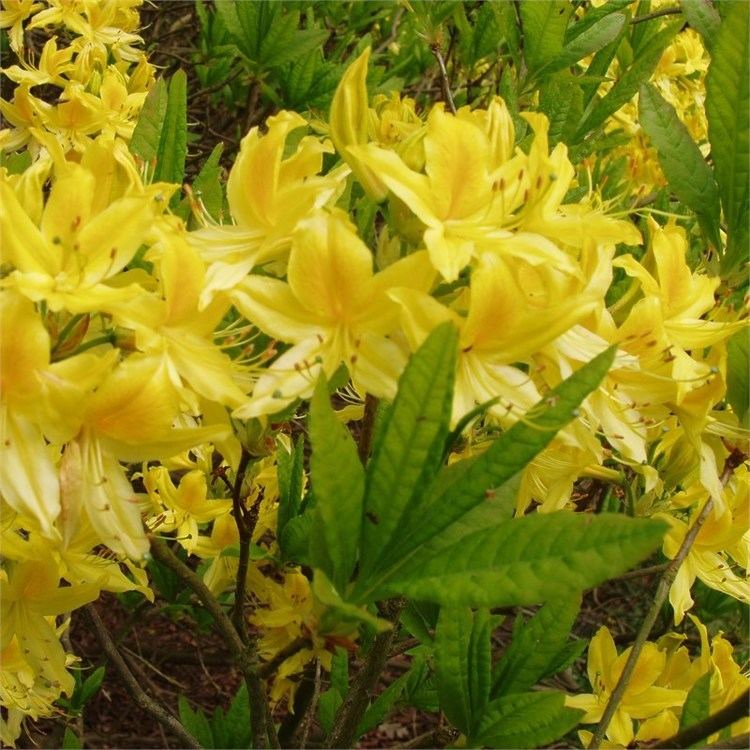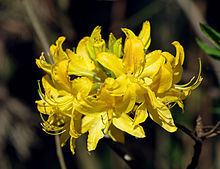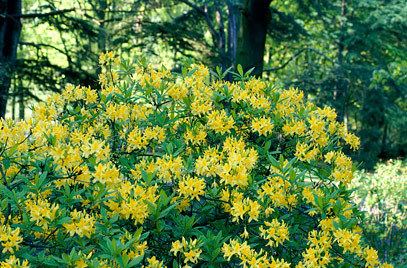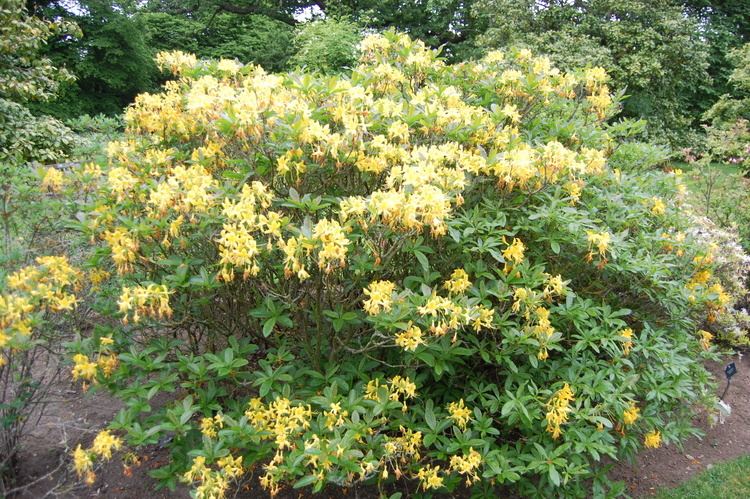Kingdom Plantae Family Ericaceae Subgenus Pentanthera Scientific name Rhododendron luteum | Order Ericales Genus Rhododendron Section Pentanthera Rank Species | |
 | ||
Similar Rhododendron ponticum, Rhododendron catawbiense, Rhododendron caucasicum, Rhododendron Knap Hill Hybrid Gr, Rhododendron impeditum | ||
Rhododendron knap hill hybriden rhododendron luteum
Rhododendron luteum, the yellow azalea or honeysuckle azalea, is a species of Rhododendron native to southeastern Europe and southwest Asia. In Europe, it occurs from southern Poland and Austria south through the Balkans and east to southern Russia, and in Asia, east to the Caucasus.
Contents
- Rhododendron knap hill hybriden rhododendron luteum
- Rhododendron luteum jolie madame
- Cultivation and uses
- References

It is a shrub growing to 3 m tall, rarely 4 m. The leaves are deciduous, 5-10 cm long and 2-4 cm broad. The flowers are 3-4 cm diameter, bright yellow, and strongly perfumed, produced in trusses of 5-25 together. The fruit is a dry capsule 15-25 mm long, containing numerous small seeds.

Despite the sweet perfume of the flowers, the nectar is toxic, containing grayanotoxin; records of poisoning of people eating the honey date back to the 4th century BC in Classical Greece.

Rhododendron luteum jolie madame
Cultivation and uses

It is widely cultivated in western Europe, used both as an ornamental plant in its own right, and as a rootstock onto which other azalea cultivars are grafted. It is locally naturalised in western and northern Europe. In Britain it has colonised many wet heaths and bogs, but unlike its relative Rhododendron ponticum it does not usually form dominant stands and so is of lower nature conservation concern.


